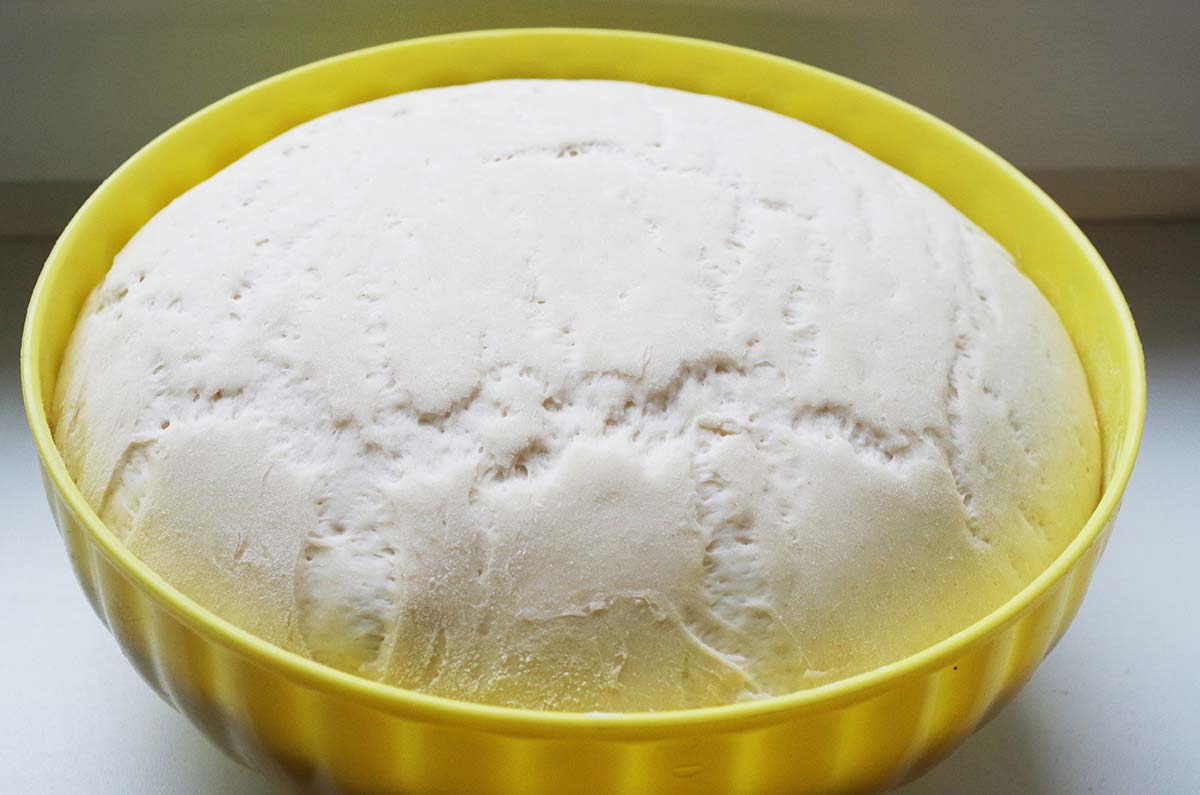Understanding the Sourdough Starter
Starters are a means of hosting beneficial yeasts for the purpose of baking bread. When these microbes have food, water and ideal temperatures, they will multiply and breathe. Their breathing makes tiny bubbles of carbon dioxide, and then these bubbles expand to make bread rise.
Historically, starters contained many yeasts, which were magically attributed to a particular wooden bucket or bowl before folks understood microbiology. The starters were added to dough, and small amounts were set aside to be fed with more flour and water, and kept going for many generations. These yeasts worked together to ferment a variety of grains. They could be fostered without climate control because they worked together and kept each other in check through competition. They warded off pathogens, and kept each other from taking over the starter completely and eating all of the nutrients.
The Bobolink starter was begun in 2003, using a bottle of live ale, Saison Dupont. Since then, we have been feeding our starter almost daily, and we love its complex character. Also, because our starter has multiple yeasts, we have found that it keeps very well in a home environment, unfed, for months. This makes it a great candidate for a home use starter, as it is nearly impossible to kill.
We like the flavor of our starter, because it’s tangy and complex without being overly sour. This makes our breads good for those who love the idea of long fermentation, but don’t necessarily enjoy a very sour bread.
I have met bakers who take their starter on vacation, so that they can feed it three times per day. That’s devotion to your art!
Classic San Francisco sourdough bread starter usually contains one single microbe, Lactobacillus sanfranciscensis. This particular culture is famous for producing a very sour flavor. This starter is a bit demanding to the user because of the lack of friendly competition among multiple yeasts. It needs to be fed often, because the yeasts consume their flour food quickly in the absence of other microbes. I have met bakers who take their starter on vacation, so that they can feed it three times per day. That’s devotion to your art!
The Bobolink starter is fed nearly equal parts of flour and water Monday through Friday, to prepare for baking Wednesday through Saturday. We keep three different containers, one for each of three flours: unbleached artisanal wheat flour, rye flour and an heirloom wheat flour. Although the starters are fed essentially the same way, the subtle differences in the carbohydrates and absorption rates of the grains give each container’s aroma a slightly different quality.
We make between 200 and 600 loaves per day, so our starter is mixed in batches from 5 to 30 pounds. Our “carry forward” quantity is 4 pounds, certainly more than the average home baker would use.





